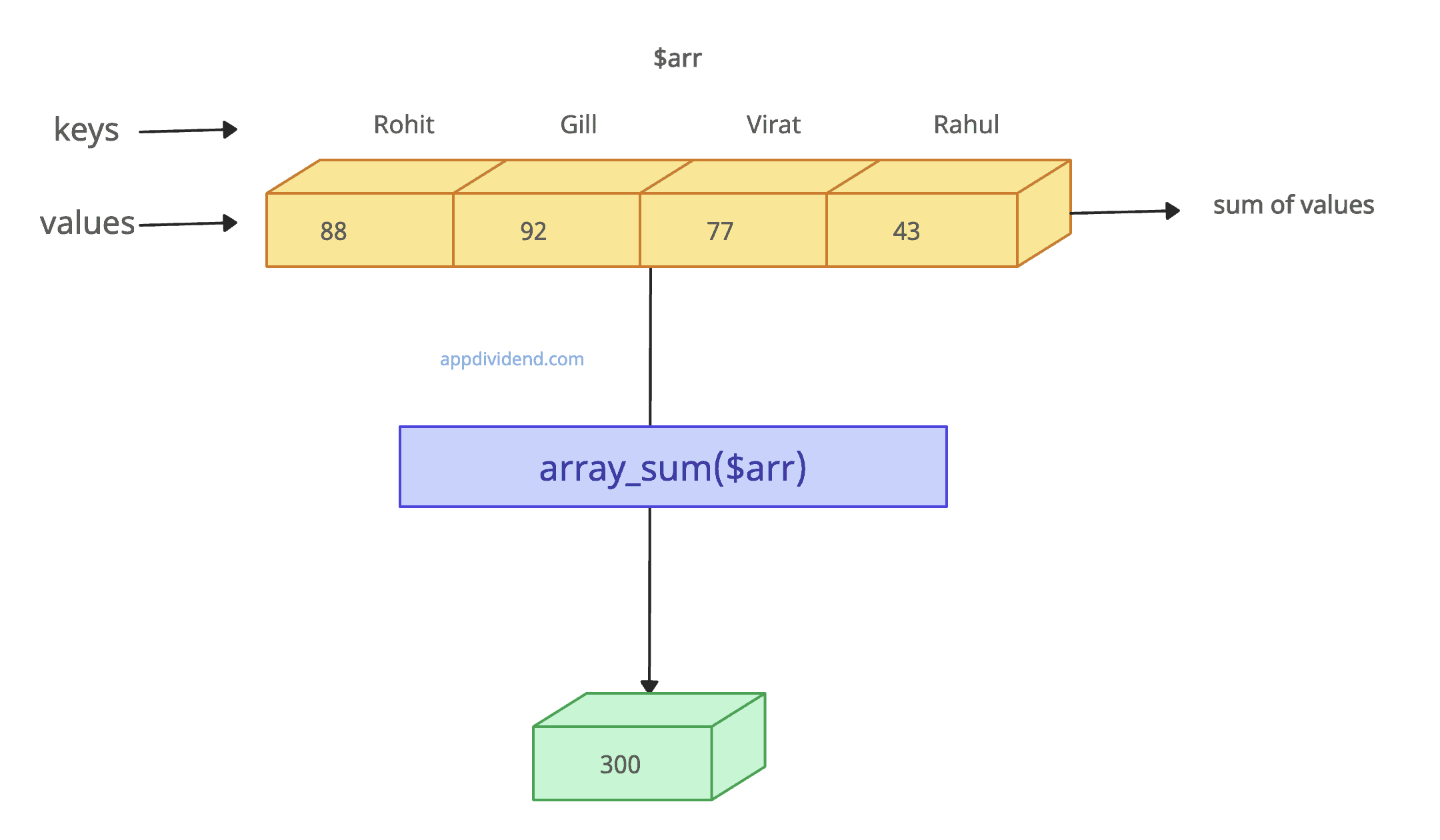PHP array_sum() function is “used to calculate the sum of all the values in an array(one-dimensional and associative).”
It returns 0 if the array is empty. The returned sum may be an integer or float.
Syntax
array_sum($array)Parameters
$array: It is an array whose sum needs to be calculated.
Return value
It returns the sum obtained after adding all the elements together.
Visual Representation
Example 1: How to Use array_sum() function
<?php
$arr = [11, 22, 33, 44];
print_r(array_sum($arr));Output
110In this example, array_sum() calculates the sum of the values in the $arr array, which is 110.
Example 2: Using Associative Array
<?php
$arr = ["Rohit" => 88, "Gill" => 92, "Virat" => 77, "Rahul" => 43];
print_r(array_sum($arr));Output
300Example 3: Passing an empty array
<?php
$arr = [];
print_r(array_sum($arr));
Output
0Example 4: Using array_sum() function to calculate the average
If you want to find an AVERAGE of the values in an array, use the sum and count the functions together.
<?php
$arr = [11, 22, 33, 44];
$average = array_sum($arr) / count($arr);
print_r($average);
Output
27.5Example 5: Integers and String Values in array_sum()
If you pass the array containing both the strings and integers, the array_sum() Function returns a sum of integers. The strings are considered as 0.
<?php
$arr = ['krunal', 21, 'ankit', 19];
echo array_sum($arr);
Output
40That’s it.




